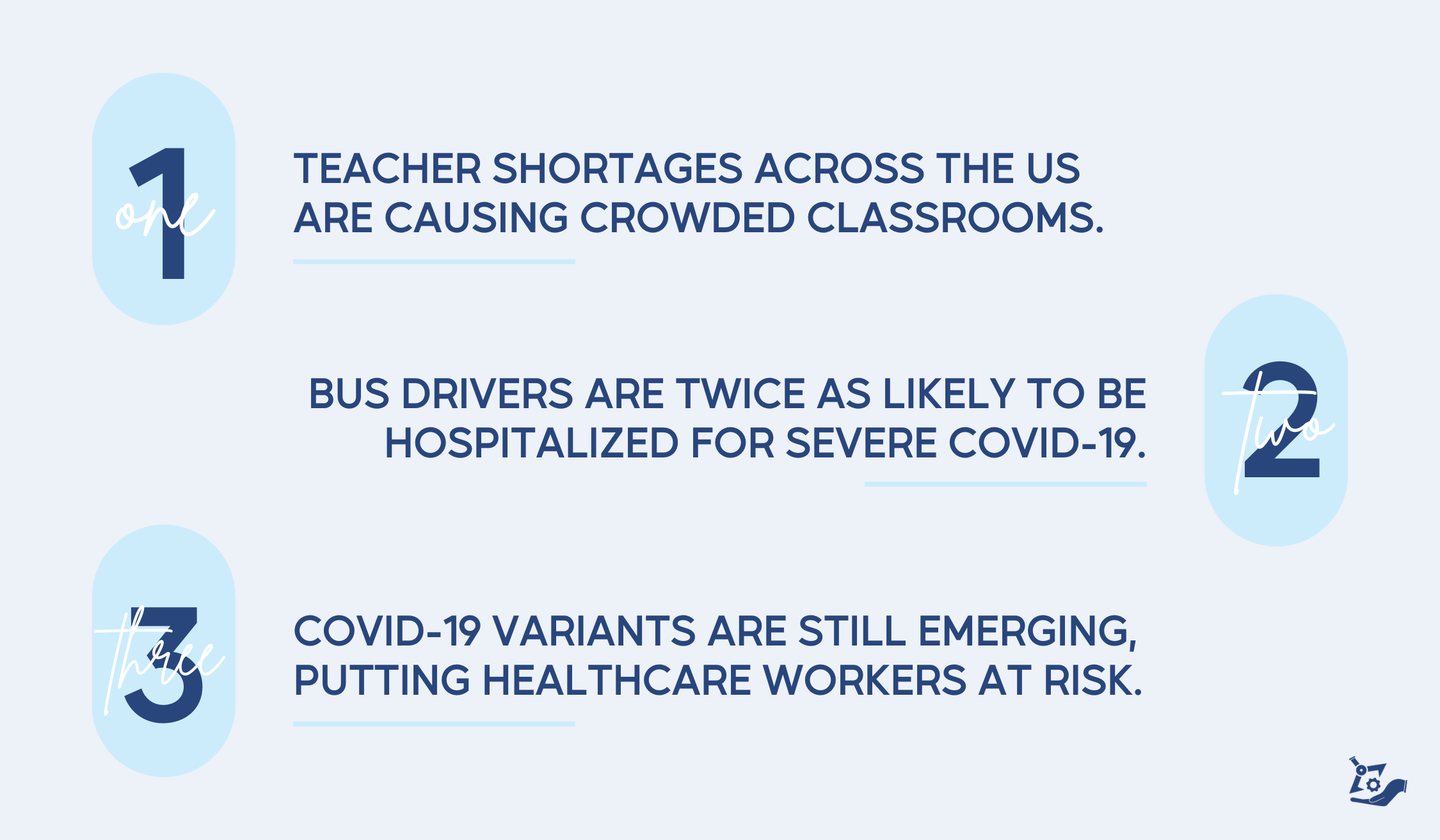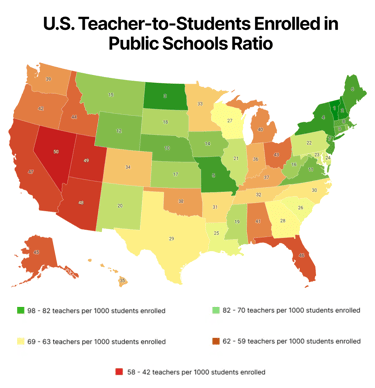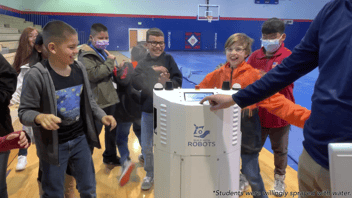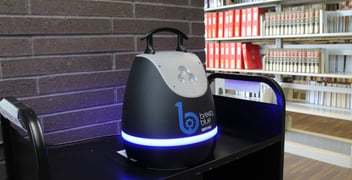
High-Risk Workers in Healthcare & Education
During the first year of the pandemic, it was clear that essential workers across industries were at a high risk for severe COVID-19. As the years went on and more places started opening up, even more people were put at risk. Healthcare and education workers are just two of the most affected groups, including doctors, nurses, teachers, bus drivers, and custodial workers. In this blog, we will explore the reasons why workers in these settings face a higher risk of hospitalization due to severe COVID-19 and shed light on the sacrifices they make daily to keep our communities safe.
The Crucial Roles of Healthcare and Education Workers
Healthcare and education workers play pivotal roles in our society, ensuring the well-being and education of our communities. Healthcare professionals, including doctors, nurses, EMTs, and support staff, are on the front lines, providing care and saving lives. They are constantly at risk of contracting COVID-19 and other diseases, so strict safety protocols are always followed and regularly updated.
On the other hand, educators shape the future by nurturing young minds, imparting knowledge, and keeping students on track to move forward. Despite the integral role that education workers play, they are not always protected; masks are no longer required for students or staff, and cleaning/disinfection protocols are not as big of a priority in schools. Moreover, it is not just teachers at risk; for example, bus drivers are twice as likely to be hospitalized for severe COVID-19.
High Risk in Healthcare Settings
Close Contact with COVID-19 Patients: Healthcare workers are at the forefront of battling the virus, often in close contact with infected individuals. This proximity to patients puts them at a significantly higher risk of exposure to the COVID-19 and other diseases . Plus, the custodial staff who clean and disinfect rooms between patients could potentially be exposed to pathogens.
PPE Shortages and Burnout: Despite their best efforts, healthcare workers have faced shortages of personal protective equipment (PPE) during the pandemic, increasing their vulnerability. Additionally, the stress and emotional toll of caring for critically ill patients can lead to burnout, potentially weakening their immune systems.
Variants and Mutations: The emergence of new COVID-19 variants has heightened concerns, as some are more transmissible and potentially more severe. Healthcare workers are at the greatest risk of encountering these variants firsthand.
Vulnerability of Education Settings
Crowded Classrooms: Education professionals are often in close quarters with students, and this is exacerbated by the current nation-wide teacher shortage. Crowded classrooms and the difficulty of maintaining mask-wearing increase the risk of viral transmission across all age groups.
Exposure to Families: Teachers and staff members not only interact with students but also with their families, further expanding their potential exposure to the virus.
Variability in Safety Protocols: Safety measures in educational institutions can vary widely, with some schools having limited resources for protective measures, putting educators at increased risk.
Impact of Vaccination
Vaccines have been a game-changer in the fight against COVID-19, and healthcare and education workers were among the first groups to receive vaccines in many countries. However, vaccination rates vary globally, and breakthrough infections are still possible, especially with the emergence of new variants.
Impact of Automated Disinfection
Regular disinfection is a crucial step in healthcare facilities, and it should be more common in schools, especially middle and high schools since students go to several classrooms per day. In both healthcare and educational buildings, effectiveness and efficiency are vital. Facility managers need to ensure that pathogens are successfully removed, and that it does not take too much time.
Breezy Blue, the disinfecting minibot fogger, is a solution that fits into healthcare and educational settings. It removes over 99.9% of pathogens, and it requires little to no labor. With the push of a button, or on an automated schedule, Breezy Blue releases a fog of disinfectant that leaves rooms germ-free with no residue and no need for wiping. It disinfects without exposing workers to contaminated rooms, and the fog settles after about 10 minutes. Breezy Blue speeds up room cleanings, ambulance turnovers, and can operate overnight so students and staff can enter a clean, disinfected room every morning.
Conclusion
Healthcare and education workers are some of the unsung heroes of the COVID-19 pandemic, but they have also been among the most vulnerable. Their close contact with the virus, exposure to variants, and lack of safety protocols have put them at high risk for severe COVID-19. It is essential to acknowledge their sacrifices, provide them with the necessary support, and ensure their safety. These individuals continue to be the backbone of our communities, and their well-being is paramount to our collective recovery.




